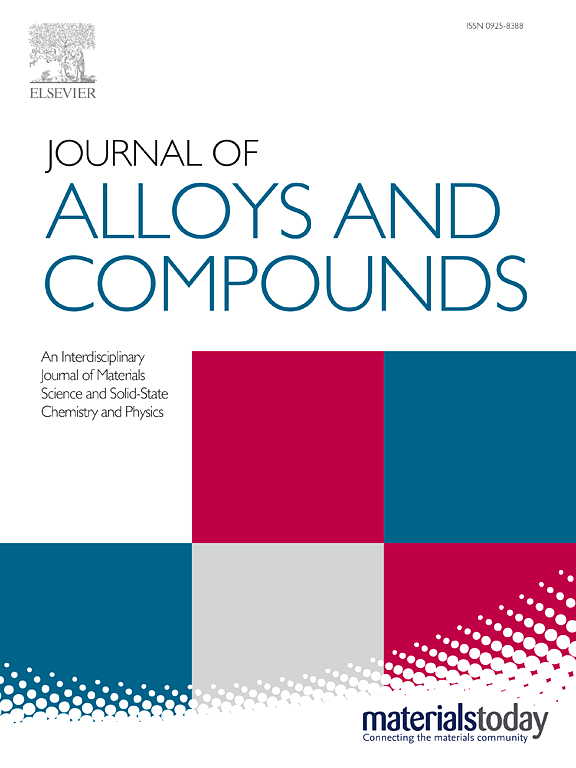Composition design of corrosion resistant Fe40Mn40Co10Cr10 HEA by “dissolution-diffusion-deposition” model
IF 5.8
2区 材料科学
Q2 CHEMISTRY, PHYSICAL
引用次数: 0
Abstract
Fe40Mn40Co10Cr10 high-entropy alloy (HEA) is known for the outstanding mechanical properties. However, the poor corrosion resistance severely inhibits its popularization. To remove the corrosion problem obstructing the application of Fe40Mn40Co10Cr10 HEA, the “dissolution-diffusion-deposition” model was used to optimize its composition. Since increasing pH value significantly enhanced the corrosion resistance, the N alloying approach, which could remit the acidification of solution environment, was proposed according to the modelling calculation results. The verify experiments on the HEAs with similar compositions as those in modelling calculation show that N alloying increased the pitting potential and optimized the passive film. The oxide content and the ratio of Cr2O3 in passive film improved with N addition, which clarified the enhancement of protectivity. During the passivation process, N suppressed the acidification of solution mainly by the dissolving process of N, and the hydrolyzation reaction of NH3. The alkaline environment created by N provided a favorable condition for passivation. Additionally, the CrN layer existing on the interface of matrix/passive film also played an important role in the repassivation process of matrix. The “dissolution-diffusion-deposition” model could be a powerful tool when design the corrosion resistant alloy, since it is qualified to provide a quantitative description for the influence of element addition on passivation process.

采用“溶解-扩散-沉积”模型设计耐腐蚀Fe40Mn40Co10Cr10 HEA的成分
Fe40Mn40Co10Cr10高熵合金(HEA)具有优异的力学性能。然而,耐腐蚀性差严重阻碍了其推广。为了消除阻碍Fe40Mn40Co10Cr10 HEA应用的腐蚀问题,采用“溶解-扩散-沉积”模型对其成分进行优化。由于pH值的增加显著提高了耐蚀性,根据模型计算结果,提出了缓解溶液环境酸化的N合金化方法。在与模型计算相似成分的HEAs上进行的验证实验表明,N合金化提高了点蚀电位,优化了钝化膜。N的加入提高了钝化膜的氧化物含量和Cr2O3的比值,说明了钝化膜的保护性能增强。在钝化过程中,N主要通过N的溶解过程和NH3的水解反应抑制溶液的酸化。N形成的碱性环境为钝化提供了有利条件。此外,存在于基体/钝化膜界面上的CrN层在基体的再钝化过程中也起着重要作用。“溶解-扩散-沉积”模型能够定量描述元素添加对钝化过程的影响,是设计耐蚀合金的有力工具。
本文章由计算机程序翻译,如有差异,请以英文原文为准。
求助全文
约1分钟内获得全文
求助全文
来源期刊

Journal of Alloys and Compounds
工程技术-材料科学:综合
CiteScore
11.10
自引率
14.50%
发文量
5146
审稿时长
67 days
期刊介绍:
The Journal of Alloys and Compounds is intended to serve as an international medium for the publication of work on solid materials comprising compounds as well as alloys. Its great strength lies in the diversity of discipline which it encompasses, drawing together results from materials science, solid-state chemistry and physics.
 求助内容:
求助内容: 应助结果提醒方式:
应助结果提醒方式:


